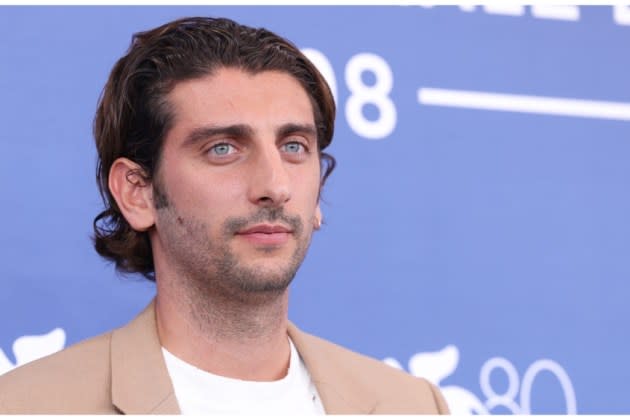Pietro Castellitto on Depicting the Romantic Side of Rome’s One Percent in His Frenzied Film ‘Enea’

Italian hotshot Pietro Castellitto is in competition in Venice with his second feature “Enea,” in which he also stars as the titular character, a young Roman sushi restaurant owner and cocaine dealer whose best friend Valentino just got his license as an airplane pilot. There is a lot going on in this fresh and frenzied film lensed by ace cinematographer Radek Ladczuk (“The Babadook”).
“Enea” is produced by Lorenzo Mieli’s the Apartment, which is a Fremantle company, and Luca Guadagnino’s Frenesy. Vision Distribution is handling world sales.
More from Variety
'The Rescue' Review: A Robust Argentinian Showcase for 'Money Heist' Star Rodrigo de la Serna
'City of Wind' Review: Modern and Ancient Mongolia Meet in a Striking, Poignant Youth Drama
Ava DuVernay Beams as 'Origin' Gets Near 6-Minute Standing Ovation at Venice
Castellitto spoke to Variety about what drew him to make what he calls a gangster movie without the gangster bits.
This seems like a very personal film. Is it?
I would say it’s basically a movie about the desire to feel alive. What moves Enea is the need to feel life pulsing within him. There is this tragic paradox that we feel more alive when we are at war of some sort. So Enea is almost forced to invent a war to feel alive and to do this he gets involved with a corrupt Roman underworld. But the desire that drives him is pure and incorruptible.
Of course Enea comes from privilege, he’s a wealthy young man
In dramatic terms that was important precisely because you feel more alive when you are at war, whereas within a context of comfort, in which peace proliferates, there is also greater paralysis. Enea’s neighborhood, the restaurants where he eats, can be considered elitist. But his basic desire to feel life pulsing in his veins is not elitist, it inhabits everyone. As far as I’m concerned, it’s common to all young people in any neighborhood, in any city, anywhere in the world.
Rome, mainly the city’s wealthy side, is also a character in your film. Do you agree?
Yes. Rome is a city full of churches and Smart cars. It’s a city that mixes the sacred with the profane, it’s full of contradictions. It’s very cinematic. Within Rome’s elite the basic values of existence are not sneered at. There is a cult of beauty, money, of having a great body, of combat sports. These basic carnal values have not been snubbed yet. So this creates conflicts, and conflicts create stories. Of course there is a dark side to this, which I include in the film. But it’s too easy to depict the ugly side of this world [of privilege]. I think it’s more interesting to look its substratum of humanity and romanticism. Also, underneath “Enea” there is a classic gangster movie and occasionally some of the characters from this gangster movie come into the film in surprising ways.
How did you chose Radek Ladczuk as cinematographer and what was it like working with him?
When I was in prep I was looking for a director of photography and I asked Luca Guadagnino for help. He wrote up a list of names and told me that I should meet Radek on Zoom. Right after we did that I instinctively chose Radek. It’s been great working with him. I would call the photography on this film both realistic and magical. I like to work with natural light, so Radek would say to me: “Pietro, we are below the necessary light levels, can we turn some on?” But luckily we were shooting with a very open lens and a Sony Venice camera, so in most cases we didn’t have to.
Best of Variety
Oscars Predictions: Best Actor - There Will Be Blood in the Lead Actor Race
Everything We Know About 'I Am Legend 2,' Starring Will Smith and Michael B. Jordan
Oscars Predictions: Best Actress - Festivals Declare Emma Stone and Jodie Comer Awards Contenders
Sign up for Variety’s Newsletter. For the latest news, follow us on Facebook, Twitter, and Instagram.

